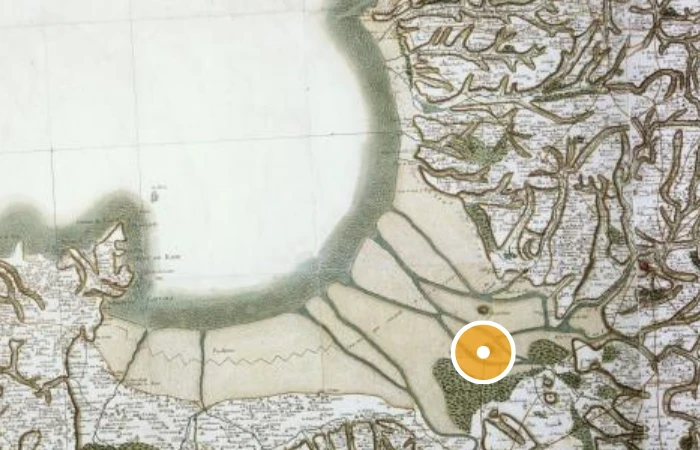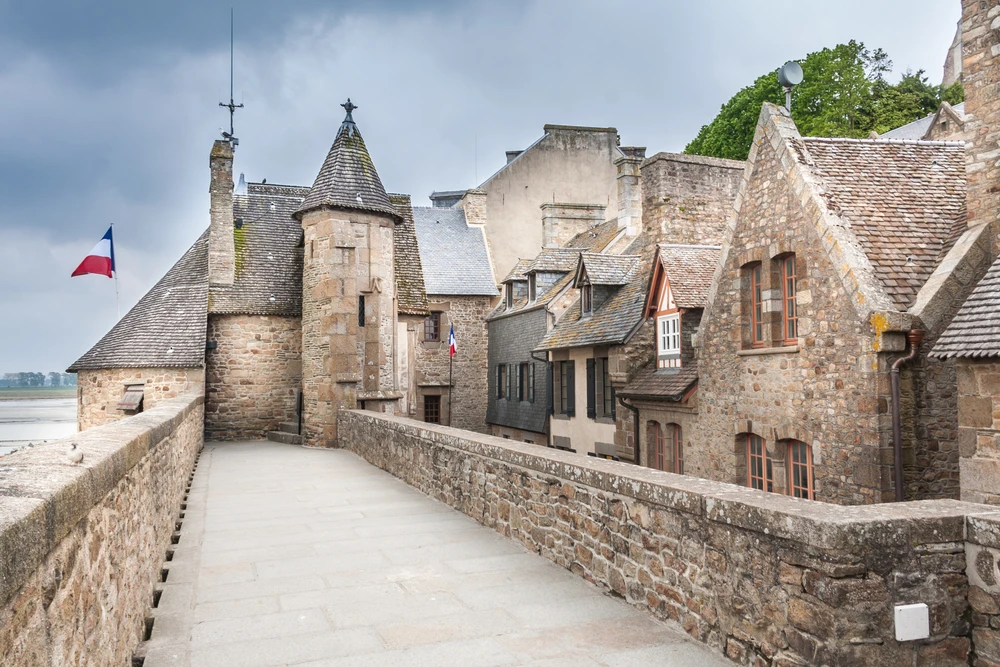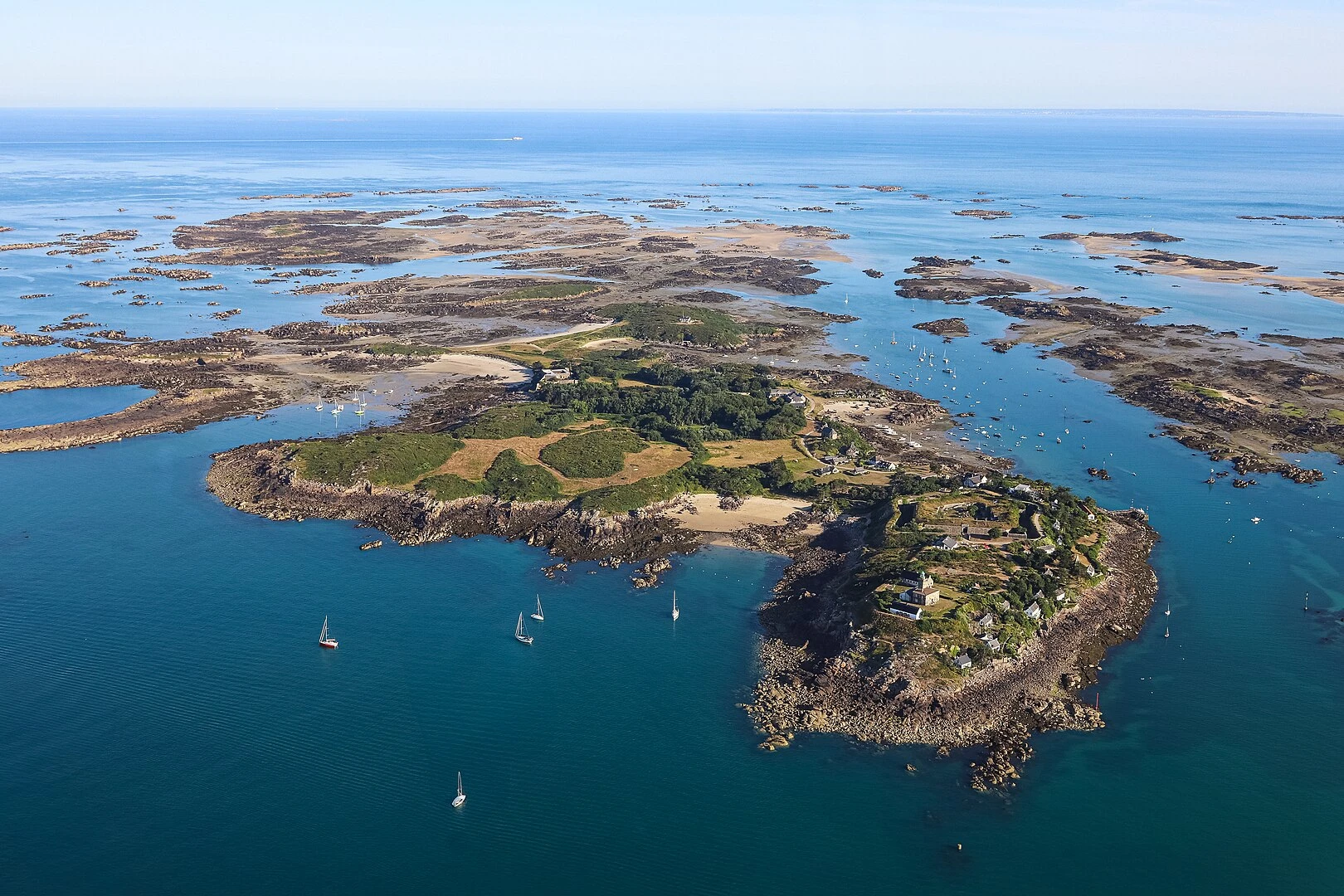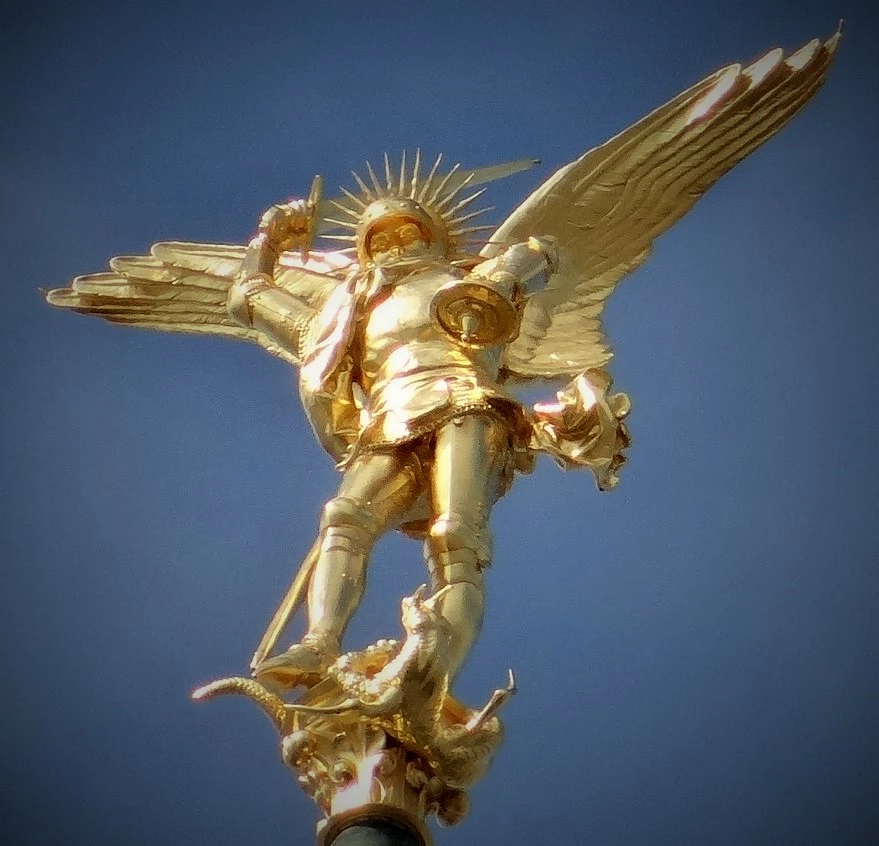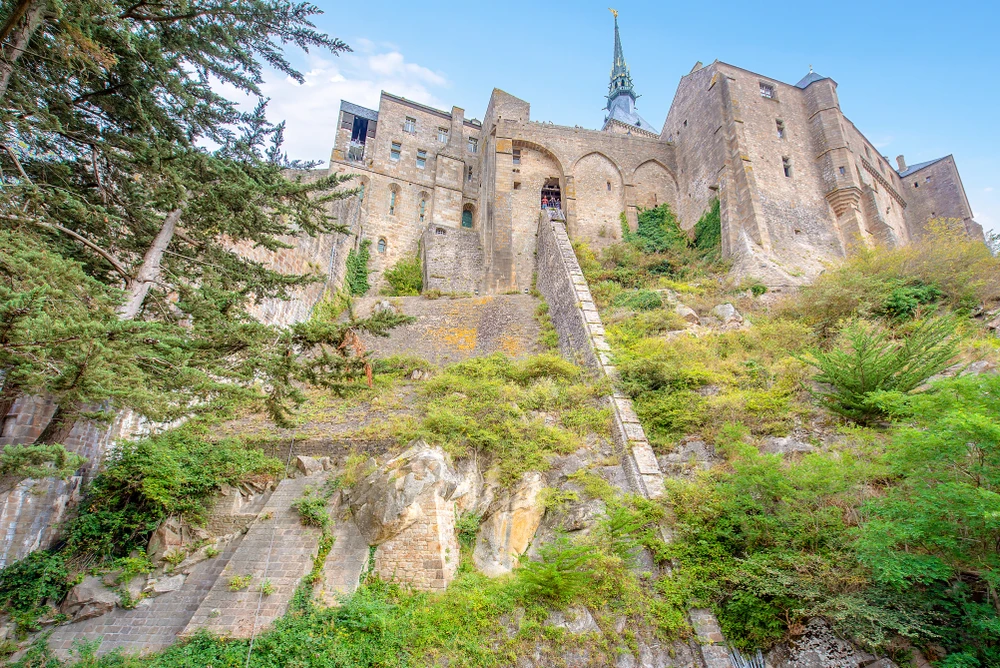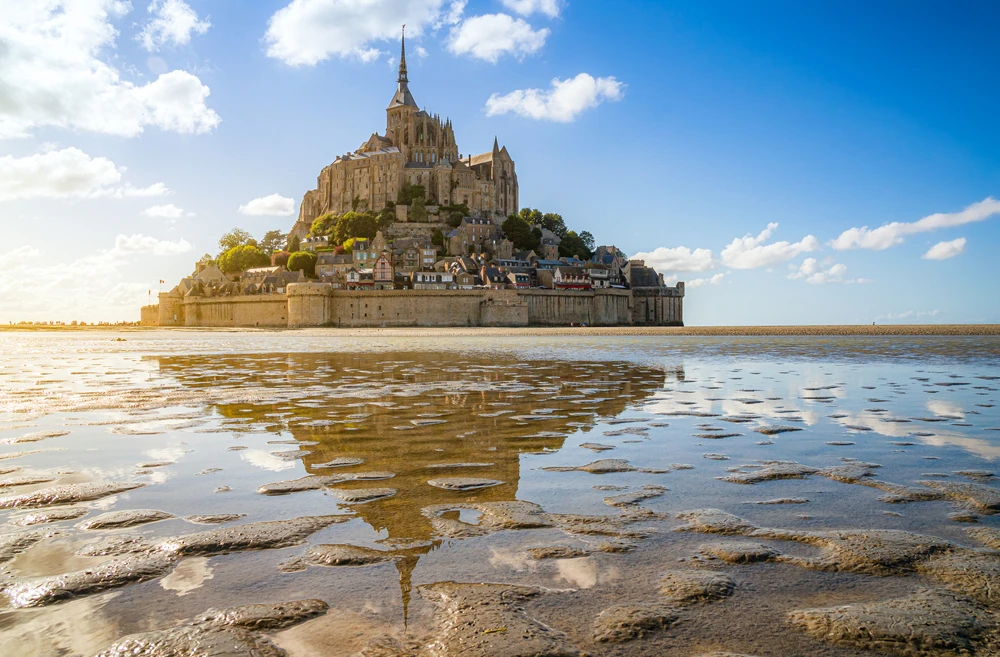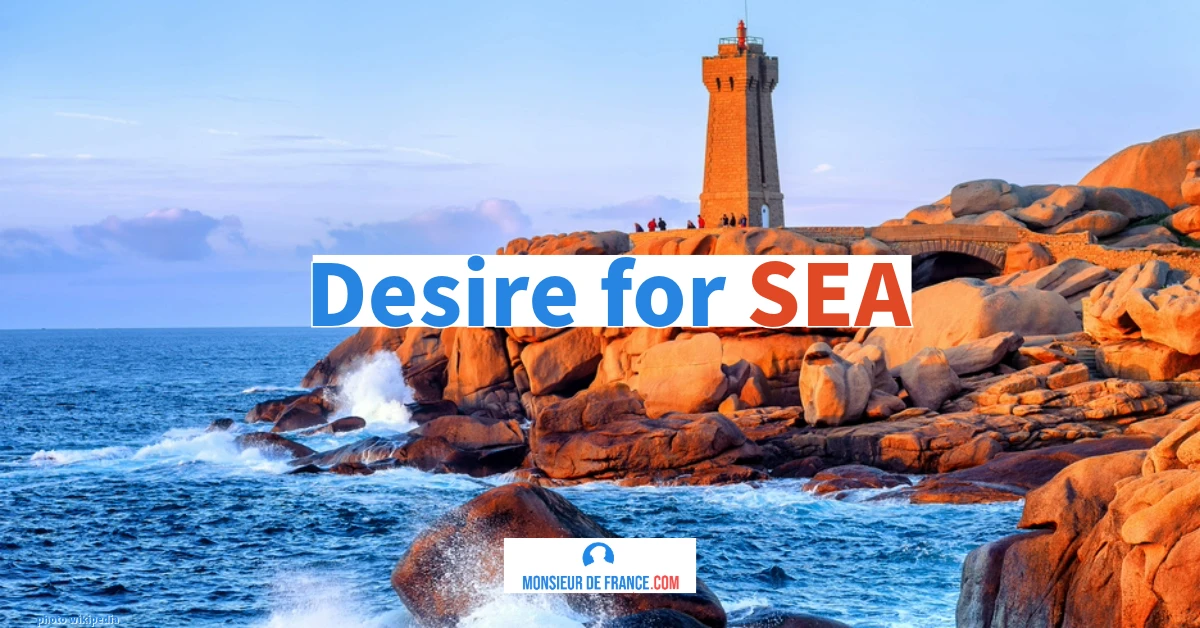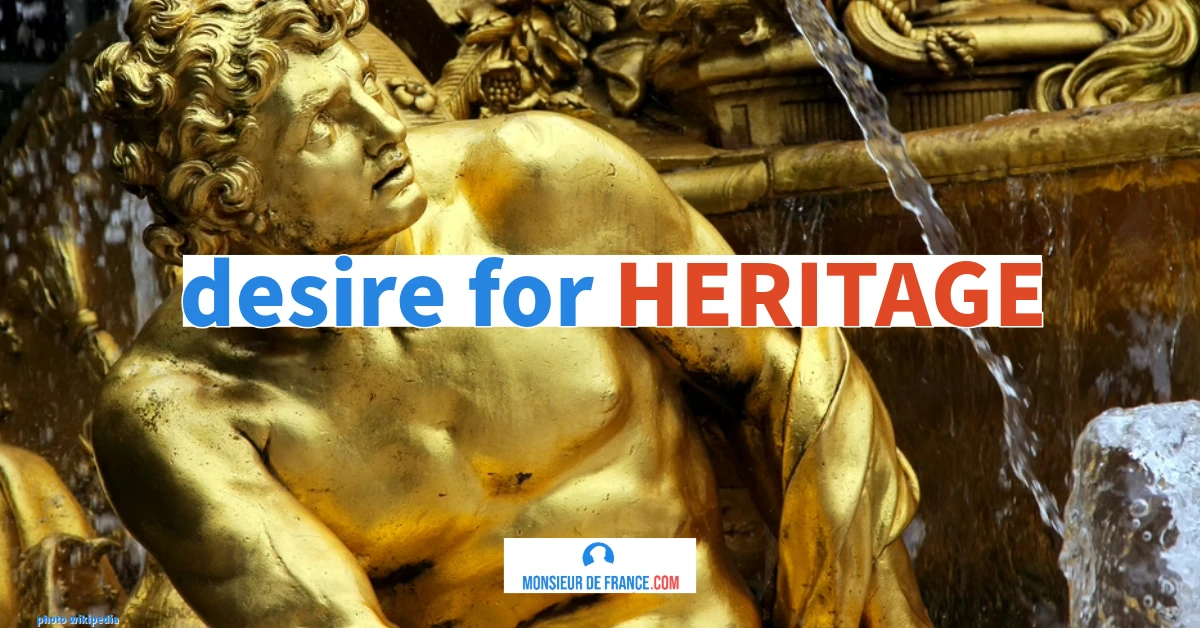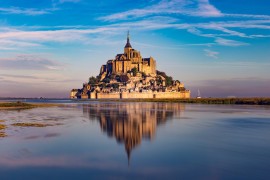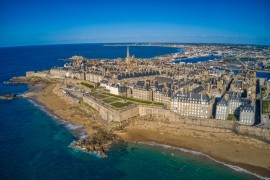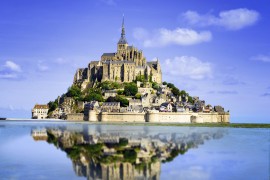The 5 definitive arguments in favor of Normandy
Mont Saint Michel depicted in the middle of the bay on Cassini's map (18th century). On the far left is Saint Malo, on the far right is Granville.
1️⃣ It is located in Normandy, in the department of Manche
The first irrefutable fact: Mont-Saint-Michel is located in Normandy.
It is a commune in the department of Manche, part of the canton of Pontorson and the prefecture of Avranches.
The Couesnon River, which winds through the bay, serves as a natural border: the Mont is east of the river, and therefore on the Normandy side.
Even Cassini's 18th-century map clearly shows it in Norman territory, between Granville on the right and Saint-Malo on the left.
The ramparts of Mont Saint Michel. Photo chosen by Monsieurdefrance.Fr: Photomario/shutterstock
2️⃣ The stones used to build it come from the Chausey Islands... which are also Norman
The Mount is Norman right down to its very foundations.
The granite blocks used to build the abbey and ramparts come from the Chausey Islands, off the coast of Granville.
Since the Middle Ages, these Norman quarries have supplied the stones, which were transported by boat to the bay.
Craftsmen, stonemasons, builders: they all came from Normandy. Even the substance of Mont-Saint-Michel is Norman.
Chausey islands / Photo choisie par Monsieur de France : Par Planespotter1 — Travail personnel, CC BY-SA 4.0, https://commons.wikimedia.org/w/index.php?curid=169286381
3️⃣ No Duke of Brittany ever claimed Mont-Saint-Michel
History is clear: no Duke of Brittany ever claimed Mont-Saint-Michel.
From 933 onwards, it belonged to the Duchy of Normandy, annexed by Duke William Longsword.
Neither Nominoë, François II, nor any other Breton sovereign contested this annexation.
The duchies of Brittany and Normandy were sometimes rivals, but never to the point of disputing this sacred rock: Mont-Saint-Michel has always been Norman, both politically and spiritually.
4️⃣ It has belonged to the diocese of Avranches since its creation
Mont-Saint-Michel was founded in 708 when Bishop Saint Aubert of Avranches received orders from the Archangel Michael to build a sanctuary there.
From its foundation, the site has therefore belonged to the Norman diocese of Avranches.
It has never been under the authority of any Breton religious authority: neither Dol, Saint-Brieuc, nor Saint-Malo.
When Benedictine monks settled there in 966, it was still the Duke of Normandy who provided them with support and protection.
5️⃣ Mont-Saint-Michel has always been Norman
Richard Coeur de Lion / Duc de Normandie et couronné Roi d'Angleterre / Photo choisie Par Matthieu Paris — A 13th-century chronicle. Chetham MS Ms 6712 (A.6.89), fol.141r, Domaine public, https://commons.wikimedia.org/w/index.php?curid=15543148
Unlike other border territories, Mont-Saint-Michel has never undergone any administrative changes. It has survived the centuries without ever coming under Breton authority. During the Hundred Years' War, it even became a symbol of resistance: one of the few Norman strongholds not to fall into English hands. The English nicknamed it “the tomb of the English.” Loyal to France and Normandy, it emerged from medieval history more brilliant than ever.
Mont-Saint-Michel, the spiritual and cultural heart of Normandy
From the Middle Ages onwards, the Mont became a major pilgrimage site.
The faithful came from all over Europe to honor Saint Michael, protector of Normandy.
The Norman dukes and then the kings of France made the Mont a symbol of their faith and power.
Benedictine monks founded a famous library and scriptorium there.
The abbey, nicknamed “the Wonder of the West,” combines architectural prowess with spiritual elevation.
The Archangel Saint Michael by Emmanuel FREMIET (1899). He slays the dragon lying at his feet. Photo selected by Monsieurdefrance.fr: Ibex73, CC BY-SA 4.0 <https://creativecommons.org/licenses/by-sa/4.0>, via Wikimedia Commons
An undefeated fortress and a Norman landscape
During the Hundred Years' War, the Mount was besieged several times, but never surrendered.
The ramparts, monks, and Norman soldiers repelled the English assaults.
This heroic resistance transformed Mont Saint-Michel into a symbol of Norman courage.
Everything around it exudes Normandy: the salt marshes, the villages of Beauvoir, Pontorson and Avranches, the quarries of Chausey, the tides of the English Channel, the changing light that bathes the bay.
Mont-Saint-Michel is not just a monument, it is a living landscape, a soul.
A Norman identity recognized throughout the world
Today, the Mont is the most visited tourist site in Normandy and one of the best known in France.
Listed as a UNESCO World Heritage Site since 1979, it is managed by Norman institutions.
The region organizes cultural events, pilgrimages, and exhibitions there.
On the official logo of Normandy, the horse and the Mont often appear together: two symbols of the same regional pride.
.The Abbey seen from below. Photo selected by Monsieurdefrancefr: Nick Brundle Photography/Shutterstock.com
What I liked best
What I like most about Mont-Saint-Michel is the moment when you leave the parking lot and the Mont gradually appears on the horizon. The footbridge seems to float over the bay, the light changing with every step. You can hear the wind, the seagulls, and then, suddenly, the bells.
Some houses in Mont-Saint-Michel. Photo selected by Monsieurdefrance.Fr: Rolf E. Staerk/shutterstock
Inside, cobbled streets climb up to the abbey; wrought-iron signs, half-timbered houses, and stone staircases tell a thousand years of history. Climbing up to the abbey terrace is like walking towards the sky: the sea stretches as far as the eye can see, and you understand why this place has fascinated people for centuries.
Gastronomy around Mont Saint-Michel
It's difficult to talk about Mont Saint-Michel without mentioning its Norman culinary delights.
The agneaux de pré-salé, lambs raised on the bay's salt marshes, are a must-try specialty. Their delicate meat, flavored with sea spray, can be enjoyed in the inns of Pontorson or Avranches.
It's also impossible to miss the legendary omelette de la Mère Poulard, served over a wood fire since the late 19th century.
And to accompany it, a golden Normandy cider or a sparkling poiré do justice to the orchards of the bocage.
The desserts are typical of the region: simple and generous — apple tart, salted butter caramel, Isigny crème fraîche.
Around the Mont, every meal reminds you that Normandy is as much to be savored as it is to be visited.
Good apples make good cider. Photo chosen by monsieurdefrance.com: by 3938030 from Pixabay
How to get to Mont-Saint-Michel
🚗 By car
- From Paris: 360 km, approximately 4 hours via the A13 then the A84 (exit 33 – Pontorson / Le Mont-Saint-Michel).
- From Rennes: 80 km, approximately 1 hour 10 minutes via the N175.
- From Caen: 125 km, approximately 1 hour 45 minutes via the A84.
Parking lots are located on the mainland; free shuttles (or walking!) take you to the footbridge in about 15 minutes.
Always be wary of the sand in Mont Saint Michel Bay, it has swallowed up many unwary visitors. Photo chosen by Monsieurdefrance Nyokki/shutterstock
🚆 By train
The nearest train station is Pontorson – Mont-Saint-Michel (direct connection from Rennes: 45 min).
From Paris-Montparnasse, you can take a TGV to Rennes, then a connection to Pontorson or the “Mont-Saint-Michel” shuttle.
Another option: Granville (1 hour from Caen), then regional buses.
✈️ By plane
- Rennes – Saint-Jacques Airport: 1 hour 15 minutes by car.
- Caen–Carpiquet Airport: 1 hour 45 minutes by car.
- Paris–Charles de Gaulle Airport: 4 hours by car or 3 hours by train + shuttle.
🏨 Accommodation
To prolong the magic:
- On the Mont: historic hotels and medieval inns (unique atmosphere at sunset).
- In Pontorson (9 km): numerous guesthouses and cottages with views of the bay.
- In Beauvoir (4 km): comfortable hotels at reasonable prices, easy access on foot or by shuttle.
- In Avranches (25 km): charming hotels and gourmet restaurants.
🌐 Useful official websites
- Mont-Saint-Michel – Normandy Tourist Office: ot-montsaintmichel.com
- Mont-Saint-Michel Abbey: abbaye-mont-saint-michel.fr
- Normandy Tourism: normandie-tourisme.fr.
FAQ: everything you need to know about Mont-Saint-Michel
Is Mont-Saint-Michel in Brittany?
No, it is in Normandy, in the department of Manche. The border with Brittany is four kilometers further west.
Why the confusion?
Because of the Couesnon, a capricious river that has sometimes changed course. But maps and archives confirm that Mont-Saint-Michel has always been Norman.
When is the best time to visit?
Spring and fall offer the most beautiful light and fewer crowds. The equinox tides in March and September are spectacular.
How much time should I allow for the visit?
A full day allows you to visit the abbey, the ramparts, and enjoy the village. For the sunset, stay overnight!
Do I need to book to visit the abbey?
Yes, it is recommended that you book your skip-the-line ticket on the official website, especially in summer or during the holidays.

